Melanie Tosik
Neural Networks and Quantifier Conservativity: Does Data Distribution Affect Learnability?
Sep 15, 2018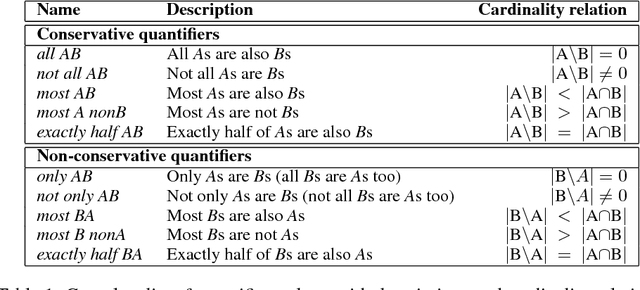
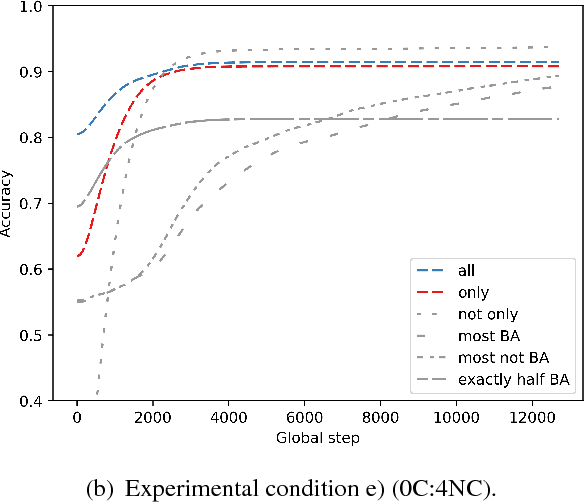
Abstract:All known natural language determiners are conservative. Psycholinguistic experiments indicate that children exhibit a corresponding learnability bias when faced with the task of learning new determiners. However, recent work indicates that this bias towards conservativity is not observed during the training stage of artificial neural networks. In this work, we investigate whether the learnability bias exhibited by children is in part due to the distribution of quantifiers in natural language. We share results of five experiments, contrasted by the distribution of conservative vs. non-conservative determiners in the training data. We demonstrate that the aquisitional issues with non-conservative quantifiers can not be explained by the distribution of natural language data, which favors conservative quantifiers. This finding indicates that the bias in language acquisition data might be innate or representational.
Debunking Fake News One Feature at a Time
Aug 08, 2018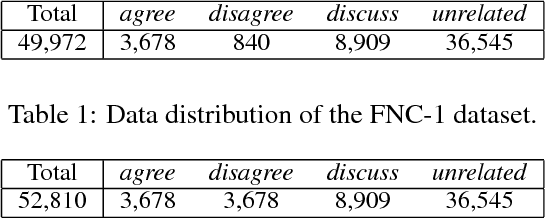
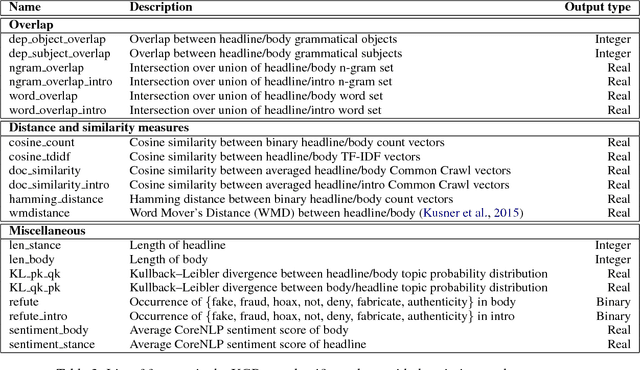
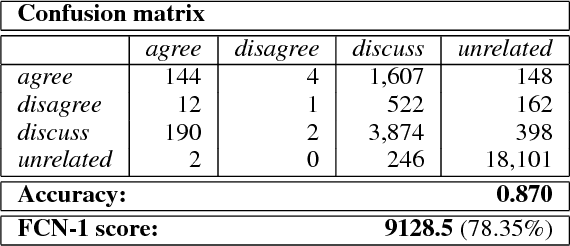
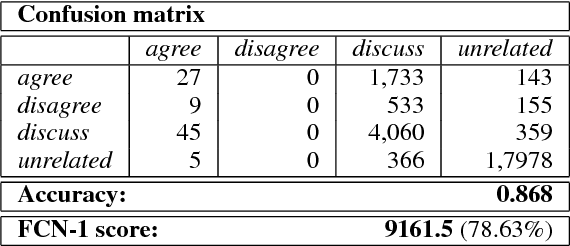
Abstract:Identifying the stance of a news article body with respect to a certain headline is the first step to automated fake news detection. In this paper, we introduce a 2-stage ensemble model to solve the stance detection task. By using only hand-crafted features as input to a gradient boosting classifier, we are able to achieve a score of 9161.5 out of 11651.25 (78.63%) on the official Fake News Challenge (Stage 1) dataset. We identify the most useful features for detecting fake news and discuss how sampling techniques can be used to improve recall accuracy on a highly imbalanced dataset.
 Add to Chrome
Add to Chrome Add to Firefox
Add to Firefox Add to Edge
Add to Edge